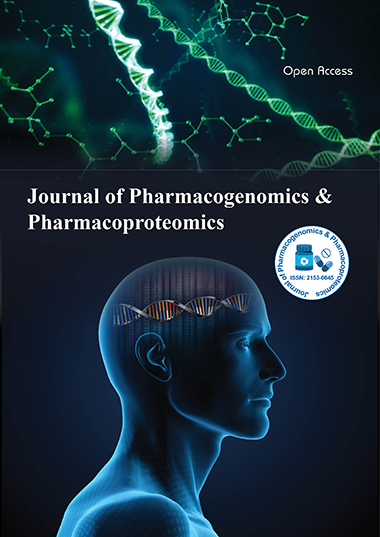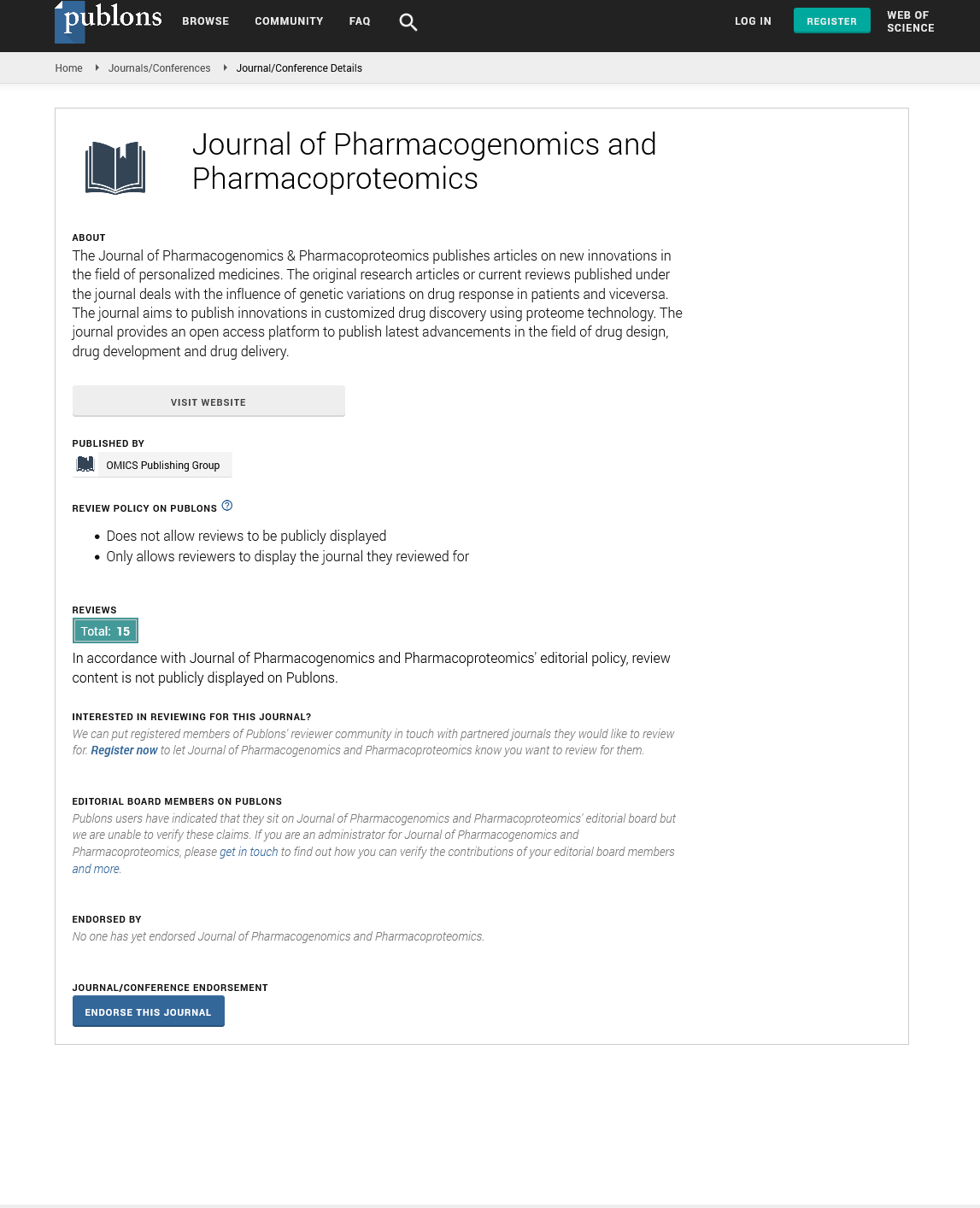Indexed In
- Open J Gate
- Genamics JournalSeek
- Academic Keys
- JournalTOCs
- ResearchBible
- Electronic Journals Library
- RefSeek
- Hamdard University
- EBSCO A-Z
- OCLC- WorldCat
- Proquest Summons
- SWB online catalog
- Virtual Library of Biology (vifabio)
- Publons
- MIAR
- Euro Pub
- Google Scholar
Useful Links
Share This Page
Journal Flyer

Open Access Journals
- Agri and Aquaculture
- Biochemistry
- Bioinformatics & Systems Biology
- Business & Management
- Chemistry
- Clinical Sciences
- Engineering
- Food & Nutrition
- General Science
- Genetics & Molecular Biology
- Immunology & Microbiology
- Medical Sciences
- Neuroscience & Psychology
- Nursing & Health Care
- Pharmaceutical Sciences
Commentary - (2024) Volume 15, Issue 1
Potential Benefits of Using Genetics and Bioinformatics for Female Bone Development Research
Sheng Xiao*Received: 01-Jan-2024, Manuscript No. JPP-24-24893; Editor assigned: 05-Jan-2024, Pre QC No. JPP-24-24893 (PQ); Reviewed: 19-Jan-2024, QC No. JPP-24-24893; Revised: 26-Jan-2024, Manuscript No. JPP-24-24893 (R); Published: 02-Feb-2024, DOI: 10.35248/2153-0645.23.15.090
Description
Genetics is the study of genes, hereditary traits, and genetic variation across species. It is an ever-evolving field, with researchers constantly discovering new ways to use genetics to understand inherited traits, disease susceptibility, and even environmental influences on the human body. Bioinformatics is a field of computer science that applies computational methods for analyzing large amounts of data related to genetics. This allows researchers to identify genetic patterns that can be used for diagnosis and treatment. The combination of genetics and bioinformatics has enabled scientists to identify factors linked to female bone development, allowing for more targeted treatments in this area.
Genetics play an important role in determining how bones develop in females. Researchers have been able to identify several gene variations related to decreased bone density in women. Additionally, some genetic variations have been found that increase the risk of fractures or other damage due to weakened bones. By using bioinformatics tools such as genotyping or sequencing techniques, researchers are able to examine large amounts of data quickly and accurately in order to identify genetic patterns associated with increased or decreased bone density in females. By studying the interaction between environment and genetics in females it is possible to gain insight into why some women experience weak bones at certain points during their lives while others do not. This knowledge can then be used by doctors when making treatment decisions so that patients get the most effective care based on their individual circumstances.
The power of genetics and bioinformatics know no bounds when it comes to understanding female bone development. By examining genetic variations associated with decreased bone density as well as environmental factors that may influence peak bone mass it is possible for doctors and researchers alike to gain valuable insight into how best treat individuals according to their individual needs. This could lead not only improved medical care but could also greatly reduce costs associated with treating diseases caused by weakened bones due the increased precision when selecting treatments or preventative measures based on an individual’s specific circumstances. It is well known that genetics has a powerful influence on the development of bones in females.
Genetics are responsible for many aspects of female bone development. Genes play a crucial role in determining the size and shape of bones, as well as their overall strength. Genetics also determine how quickly bones grow and develop during puberty, with different genetic makeup resulting in different rates of growth and development among females. Additionally, genetics can also affect the mineral content within bones, ultimately determining whether they are strong or weak. A nutritious diet rich in calcium and vitamin D is essential for healthy bone growth, while regular physical activity helps to strengthen existing bones while encouraging new ones to form. In order to better understand the connection between genetics and female bone development, researchers are now utilizing bioinformatics to identify genetic variations associated with this process. Through this analysis, researchers have identified dozens of genes associated with various aspects of female bone development including size, shape, mineral content and strength. By further analyzing these gene variations across different population groups, researchers hope to gain a greater understanding of how these genetic factors interact and contribute to overall bone health among females. Genetics and bioinformatics are powerful tools that can be used to identify factors linked to female bone development. While genetics have traditionally been used in this field, advances in bioinformatics have made it easier than ever before for scientists to explore the role genetics play in bone development. By comparing these data sets with information on environmental factors such as diet and exercise, scientists can begin to determine which genes may influence how bones develop under different conditions.
It should act as naturally genetics play an important role in bone health. For women, knowledge of the genetic factors that can contribute to osteoporosis and other bone-related diseases is essential for prevention, diagnosis and informing treatment decisions.
By using bioinformatics tools to investigate genetic data, researchers can identify key molecular players associated with bone health or disease in women. This powerful approach allows scientists to detect patterns in biological data that might otherwise go undetected, and it helps build a more comprehensive understanding of how genetics impact female bone development. The ability to change treatments based on a patient's individual genetic makeup can improve outcomes and reduce side effects associated with certain medications or therapies. Personalized medicine also offers doctors more precise strategies for evaluating risk factors associated with osteoporosis in women. Genetics and bioinformatics are invaluable tools for understanding how genetic variants affect female bone development. Scientific advancements made possible through these disciplines have already revealed several genes related to osteoporosis risk factors in women.
Citation: Xiao S (2024) Potential Benefits of Using Genetics and Bioinformatics for Female Bone Development Research. J Pharmacogenom Pharmacoproteomics. 15:090.
Copyright: © 2024 Xiao S. This is an open-access article distributed under the terms of the Creative Commons Attribution License, which permits unrestricted use, distribution, and reproduction in any medium, provided the original author and source are credited.

